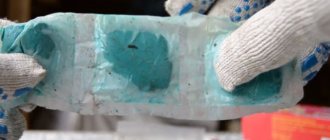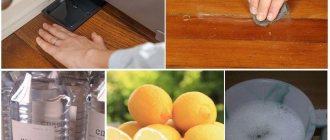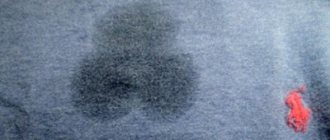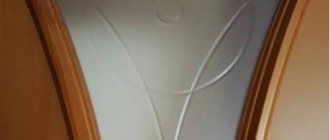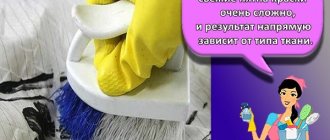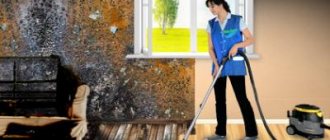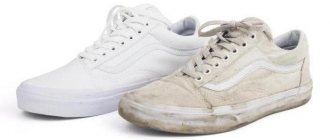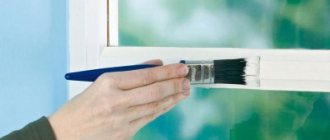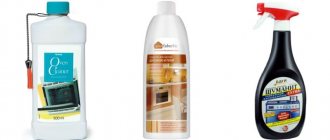When mice, rats and other rodents are noticed in the house, real chaos begins. It is customary to get rid of these little animals immediately, because the harm they cause is simply immeasurable: spoiled food supplies, chewed furniture, and even infections transmitted to people and their pets. Experts say that getting rid of rats and mice will take at least several days. One of the most effective tools for getting rid of rodents is mouse catching glue.
- Types of glue in mouse traps
- How to remove mouse catching glue from flooring?
- How to clean glue from linoleum
- Removing glue from the surface of furniture
- How to clean mouse catching glue from clothes and fabrics?
- Using household chemicals
- Using fat
- How to wash mouse glue off your hands?
- How to remove mouse glue from cat fur?
- Let's sum it up
A glue trap for mice allows you to quickly solve the problem with the appearance of these animals. In addition, it is often used to catch rats, which makes this tool truly universal. It is characterized by ease of use, but at the same time has specific rules of application. The point is that you need to be extremely careful, because the substance itself is extremely sticky.
If you use baits of this type carelessly, the adhesive composition will set almost instantly. You can only wipe it off experimentally, having tried several methods. Which ones? In this article we will tell you how to remove mouse glue and discuss the best methods that will help solve this issue.
Types of glue in mouse traps
Mouse glue comes in several varieties.
- Mousetraps or rat traps in the form of special bait houses on which glue is carefully distributed. Naturally, such rodent traps are more convenient indoors than other means. They are installed on surfaces favored by pests and do not require additional maintenance. Therefore, it is better to place them pointwise, in those places where mice have already been noticed. The use of such a rodent control product requires safe handling, as its improper use can lead to injury.
- Glue in a tube or jar for rat control. This is the more common form, but its main disadvantage is the difficulty in applying it evenly. However, such a product will not dry out even under conditions of high or, conversely, low room temperature. This glue should be applied to simple cardboard, which is for one-time use only. This means that as soon as the first mouse comes across it, the cardboard needs to be thrown away. Otherwise, natural decomposition of the animal will occur. In order for the trap to be more effective, pieces of bait must be placed on it. You can add millet and other cereals.
Naturally, both products have approximately the same composition. Therefore, regardless of the form in which the traps are presented, you can wipe off mouse glue using the same methods.
It is important to note that in rooms infested with rodents, a lot of glue-based baits will be needed. Therefore, it would be more expedient and much more humane to use an ultrasonic rat repeller. The fact is that animals are very susceptible to ultrasonic influence, and this method of repelling is guaranteed to save you from problems.
When deciding how to clean glue for mice and rats, you need to focus on the features of a particular product. Often, detailed recommendations for use are written on the labels of such products.
If a similar situation happens to you, we are in a hurry to help you figure out how to solve it correctly.
Features of the product
To combat rodents, a special glue has been developed that holds not only the mouse, but also the rat. The drug has no odor and is not considered toxic. Therefore, a glue trap can be used in residential premises without the risk of exposing household members to intoxication.
Chemical composition
The glue may contain the following active substances:
- polybutylene - a polymer with plasticity, used for the production of glue in light industry, provides sufficient bonding;
- polyisobutylene - an analogue of polybutylene with similar characteristics;
- Cycloisan is a type of adhesive polymer that not only allows you to effectively glue rodents, but also prevents premature drying and loss of adhesive properties.
In addition to the main components, the product contains excipients:
- vegetable oils;
- rubber;
- resins;
- mineral oils.
The glue is harmless. And even its penetration into the stomach in small doses does not lead to death. However, if the substance enters the digestive system, it is recommended to rinse the stomach and take activated charcoal.
Varieties
Two types of traps are produced.
- Suspension in liquid form. This drug is sold in tubes or cans, hermetically sealed. The glue can be applied to any washable surface: glass, granite, ceramics, plastic. If you don’t want to bother with subsequent washing, you can use pieces of plywood, cardboard or wood.
- Glue board. This is a fully prepared trap. The base is a regular board. Glue is applied to it. To prevent drying out, the trap is hermetically sealed in a protective film. You just need to remove the packaging and place the trap in the right place. Another feature of such a trap is the aroma that attracts rodents.
Principle of operation
The fragrant smell attracts rodents. The mouse steps on the adhesive backing with one paw and places the other one next to it. The limbs are instantly glued. The animal is unable to tear off its paws, so it is caught. Sometimes a rodent sticks to the adhesive substrate not only with its paws, but also with its fur. In attempts to free itself, the mouse loses its last strength. She dies within a couple of days from dehydration.
If you place such a trap correctly, its effectiveness will increase several times. For example, by placing a trap along a rat trail, you can catch even cautious pests that easily bypass rat traps.
How to remove mouse catching glue from flooring?
Practice shows that the use of mouse traps most often stains the floor covering. This happens for several reasons: due to carelessness, the bait can simply turn over, you can accidentally apply too thick a layer of the substance, or simply inadvertently drip onto the floor.
The main advantage of this adhesive composition is that, thanks to a specially developed formula, it remains in a liquid state for a long time. It turns out that you will clearly find the stain itself in liquid form.
It is important to note that the most problems arise when the adhesive mixture gets on the carpet. In such situations, instead of worrying about how to remove mouse glue from your carpet, it is better to look for ways to disguise the stain.
There are two most common ways to clean mouse glue from the floor:
- Water with lemon juice. In one liter of heated water, dilute the juice of at least two large lemons and add a little ethyl alcohol. Wet a rag with the resulting solution and vigorously wipe the area with the spilled adhesive.
- Soapy liquid. Water with laundry soap diluted in it has approximately the same effect. This method will help you deal with stains of any complexity. We grate a whole bar of laundry soap. The resulting shavings are completely dissolved in hot water. We wait for the liquid to cool down. Using a soft sponge, wipe the stain until it disappears completely.
The main advantage of these methods is their safety. They can be used to clean painted carpet without disturbing the paint layer.
There are other products and methods for removing rodent adhesive that can be used exclusively for cleaning durable and inexpensive floor coverings. In particular, they are suitable for cleaning linoleum.
How to clean glue from linoleum
The use of sticky rodent repellent can lead to contamination of surfaces. You can remove glue from linoleum much easier and faster than from parquet or carpet. The main advantage of this flooring is its softness. However, it is also considered the main drawback - after all, the adhesive solution sets much faster with a soft coating. Therefore, you will have only a few minutes to decide how to clean the bait traces.
It is permissible to use aggressive chemicals, which, at the same time, should not have any properties that could affect the color of the coating. For this reason, you may well use an alcohol-based method for cleaning.
- We take pharmaceutical alcohol of high concentration. A higher degree will bring a more noticeable effect.
- We dip a rag in it and vigorously rub the area where the stain was placed.
- If the stain is too large and too much adhesive has been spilled, it is recommended to remove excess adhesive with a hard object or an ordinary construction spatula. If this is not done, there is a possibility of simply spreading the stain over an even larger area.
Methods for removing tape from glass
Residual glue can be removed from glass using several means:
- hot soapy solution;
- various oils (sunflower, olive, essential);
- kerosene, white spirit, refined gasoline;
- ethyl alcohol and alcohol-containing solutions;
- ammonia;
- eraser;
- nail polish remover;
- stationery knife;
- tape;
- glass cleaner;
- special cleaning agents.
Hot soapy water
Hot water works great for removing glue residue. It is necessary to dissolve the laundry soap shavings in it. Soak a cloth in the resulting solution, apply it to the contaminated surface and leave for a while. The glue will dissolve under the influence of hot water and alkali, and its remains can be easily wiped off with a napkin if you apply a little effort. This is a good way to remove fresh tape marks, but it can be time-consuming and labor-intensive.
Vegetable oil
Any type of oil is suitable for surface treatment: sunflower, olive, linseed, essential. Fats react well with glue, changing its properties. Before you wash off the glue from the glass and the remaining tape, you need to soak a cloth in oil, apply it to the remaining glue and leave for a while. After a couple of hours, using a dry cloth, the glue that has lost its adhesive properties along with the oil can be easily removed from the glass. The difficulty is that it is difficult to fix the fabric on vertical surfaces, and after finishing the cleaning work, you need to wash the glass with dishwashing liquid.
Kerosene, white spirit, gasoline
White spirit and gasoline do a great job of removing tape residue on glass. Dip a cotton swab or hard sponge into the solution and wipe the contaminated area. This method is suitable for cleaning any glass and mirror surfaces.
Use with caution in rooms with increased fire hazard; after using gasoline or white spirit, ventilate the apartment.
Ethyl alcohol and alcohol-containing solutions
Ethyl alcohol cleans glue residues well, separating the glue from the glass surface without dissolving it or smearing it over the surface. If it is not available, you can use vodka, perfumes, and tinctures. A cotton pad or cloth should be moistened with an alcohol solution and thoroughly wipe the area contaminated with glue. The method is quite effective, but it requires time and effort.
Ammonia
Technical or medical ammonia solution is available at hardware stores or pharmacies. With it, you can easily remove excess glue by wiping the area of contamination in a circular motion with a cloth soaked in ammonia. The product not only cleans the surface well, but also gives it shine. After use, the glass is washed with water and wiped dry.
Eraser
Small glue stains can be erased with an eraser. The glass surface is resistant to mechanical stress, so the top layer will not be damaged. If the surface of the dirt is extensive, it will take a lot of effort to completely wipe off traces of glue.
Nail polish remover
How to quickly clean tape from glass if you don’t have any cleaning products on hand? Almost every woman has nail polish remover at home. You can try to remove the dirt with a cotton pad soaked in liquid. The product copes excellently with fresh glue residues.
Stationery knife
Remaining tape can be removed using a utility knife. To do this, you need to carefully remove pieces of glue, holding the blade at a slight angle to the surface.
This method should be used as a last resort and with caution to avoid scratching the glass.
Remove the tape... with tape!
In the absence of cleaning products, glue residues can be removed with tape. To do this, you need to stick a small strip of stationery tape to the contaminated areas and tear it off with sharp movements.
It is important that the tape is glued for a short time, otherwise later there will be even more problems with removing its remains from the glass
Glass cleaning products
Household chemical stores have a wide range of products that are used to clean glass. They often successfully cope with various types of contaminants, including tape, label residues, and resin. The most popular of them are Mr. Proper, "Mr. Muscle", Clin, Cif.
Special cleaning products
There are special cleaning products on the market for removing tape from various surfaces. Among them are Kiehl Tablefit, FORMULA X-5, Super CMF-240, Sticker Remover, “Merida Impet”. For ease of application, the products are sold in the form of sprays, liquids, sticks, and pencils.
Removing glue from the surface of furniture
A more difficult task is the question of how to remove mouse glue from furniture. If such a product stains upholstered furniture, it is most likely that it will simply be impossible to save it. The adhesive composition contains substances that cause serious harm to fabric coverings. But washing a certain part of a sofa or chair is an impossible task.
The only ways to save the product is to use special carpet cleaners, liquid laundry detergent and a stiff brush. However, such brushes should not be used on delicate fabrics, as they can cause irreversible damage. In such situations, the only way out is to reupholster the furniture.
Restoring a hard furniture surface is a completely doable task. Cleaning natural wood will be especially easy. For such products you can use alcohol solutions. They can also be used to clean glass and plastic.
If you have to clean furniture made from wood substitutes or products with a painted surface, it is better not to take risks and use White Spirit, a solution of lemon juice or laundry soap. Naturally, you will have to work much longer and harder, but the material itself will suffer much less.
How glue traps work and how effective they are
The principle by which glue for catching rats and mice works is quite simple: having stepped once on a surface coated with glue, the animal cannot tear its paw away from it, it rests against it with its second paw, it also sticks, and the rodent is caught.
Often, rats and mice stick to the glue not only with their paws, but also with their fur, and they are completely immobilized. After being caught, the animal tries to break away from the glue for several days until, exhausted, it dies of thirst. It should be borne in mind that if the person who set the trap finds the animal still alive, he has to kill the rodent in some other way, or simply throw the trap with the still living prey into the trash can.
Glue for catching rats and mice turns out to be quite effective due to the fact that rodents easily fall into it by simply running over the trap. That is, if you choose the right installation location, such a sticky rat trap helps to catch even those particularly careful pests that do not fall into traditional traps with bait, such as mousetraps.
How to clean mouse catching glue from clothes and fabrics?
When working with mouse glue, you need to be extremely careful, because you can stain not only the floor or furniture, but also wardrobe items. If such a situation occurs, you will have to think about how to wash mouse glue from clothes.
According to reviews, different adhesive mixtures are better washed off with different special-purpose products. However, almost all articles advising on the best way to remove glue agree that the main success is a prompt response to what happened.
Therefore, the sooner you can start cleaning the stain, the greater the chances of removing its remnants without serious consequences. After all, otherwise it would be wiser to take the item to the dry cleaner than to try to remove the stain on your own.
Using household chemicals
If you still need adhesive-filled fabric or items, try removing mouse bait stains with a heavy-duty household chemical that is not designed for washing items. These products include those designed for cleaning bathrooms or kitchen surfaces, or for washing glass or furniture.
Moreover, toilet cleaners will be an effective cleaning principle. In this case, the chances of restoring the item are approximately 50/50.
If the task is completed successfully, you should not wear the salvaged item of clothing immediately after drying. After the treatment, it must be washed two or three times with washing powder and rinsed with a special rinse aid.
Using fat
Lists of tips on how to remove glue from mice constantly suggest this non-standard method. Fat, oddly enough, also helps to cope with a surface contaminated with glue.
To do this, you will need to lubricate the adhesive spot with sunflower oil. Moreover, it is permissible to completely immerse the damaged part of the fabric in oil. There it needs to be kept for about five or ten minutes, depending on the size of the stain. After this, using a hard, clean object, you will need to carefully scrape the softened composition from the fabric.
Naturally, after such cleaning you will have to get rid of the greasy stain, which is still much easier than dealing with the remnants of the adhesive mixture. In the end, there is always the opportunity to take the item to the dry cleaner, where professionals will deal with the stain.
Description of the problem
The composition that traps small rodents is specially developed from viscous polymers that have a melting point below room temperature, so it does not harden or dry out like solutions.
In most cases, the base (up to 80%) is polybutylene with the addition of cycloisane and polyisobutylene.
The suspension can be applied to old cardboard
Polymers are not toxic, but do not interact well with weak solvents.
These glue traps are available in 2 types:
- ready-to-use traps in the form of a strip with an adhesive layer covered with a protective film for transportation,
- suspension in tubes (jar), which is applied independently to the selected base in accordance with the manufacturer’s recommendations.
Most often it is necessary to clean the contaminants obtained when applying or accidentally touching exactly 2 types of traps.
Hard case
The performance characteristics of mouse glue are specifically designed to instantly adhere to organic surfaces.
The manufacturer warns about the need to wear rubber gloves and recommends using the following solvents:
- kerosene,
- acetone,
- alcohol.
For the skin of the hands, exposure to these liquids in small quantities is usually acceptable, but removing the sticky mass from hair, pet fur, or fabric upholstery in this way will be not only difficult, but also practically impossible.
Safe ways to remove sticky glue from hair are:
- A haircut. If only the ends of long hair (wool, lint) are dirty, then it is better to trim them carefully, since treatment with synthetic or organic liquids will cause more damage to the undamaged part. It is recommended to choose this method for pets as well, otherwise it will take a lot of patience for both the pet and the owner while washing off the glue.
- The use of natural solvents (sunflower oil) and/or household chemicals. This is a more labor-intensive process, since it is necessary not only to remove dirt, but also to remove oil and synthetic detergents that are absorbed into the skin and hair. Grease removers (for example, dishwashing liquid) are used from household chemicals.
Oil will remove glue residue well, but not always the first time
Oil not only dissolves polymers, but also activates the process of self-cleaning of living tissues (the work of the sebaceous glands) and then mechanical removal of the adhered mass occurs along this film, so it is not always possible to remove the stain the first time.
In such cases, use an oil compress - generously lubricate your hand and wrap it in a thick cloth for 15-20 minutes, then rinse it off with a degreaser.
Glue that has been absorbed from fabric threads is unlikely to be washed off without damaging the appearance of the fabric base. In this case, it is better to seek help from a dry cleaner.
How to wash mouse glue off your hands?
After catching a rodent, there is almost a 100% chance of getting dirty with such glue. And as soon as such an incident occurs, the question immediately arises of how to wash mouse glue off your hands.
Human skin is not as susceptible to the effects of an adhesive solution as, for example, fabric. However, when a certain amount of mouse glue gets on your fingers, it feels about the same as if they were glued together with superglue. It is quite possible to correct the situation with ordinary sunflower oil. It does not have a strong odor, which makes it safe even for children. So, it is completely harmless to the skin and can quickly dissolve the sticky layer of glue. At the same time, you can not be afraid to scrape off its remains. Indeed, it is likely that some dead skin will be removed along with the glue, but no pain or discomfort should arise from this.
Another good remedy that will allow you to quickly wipe off the adhesive mixture from the epidermis is acetone. A bottle of such liquid is undoubtedly in every woman’s cosmetic bag. This product is very safe for the skin, and its only drawback is the rather strong smell. It is important that allergy sufferers should absolutely not wash mouse adhesive with this substance. Those who are allergic to acetone should use the first method.
Getting rid of adhesive on clothes
If glue gets on your pet's fur, it is best to cut off the tuft.
You can try to clean the fur with vegetable oil, but after the procedure you will need to thoroughly wash the animal in warm water, and scrub the affected fur with a fat-dissolving agent, for example, dishwashing detergent.
Regular pet shampoos may not remove the oil.
Important! If your pet's hair is long enough or the ends are damaged, it is better to simply cut the hairs. It is very difficult to wash mouse glue off clothes.
However, only a strong solvent can clean textiles, which can also destroy the structure of the fabric itself. It is not the best option to use sunflower oil, since after its use there may be greasy marks left that cannot always be washed off.
It is very difficult to wash mouse glue off clothes. However, only a strong solvent can clean textiles, which can also destroy the structure of the fabric itself. It is not the best option to use sunflower oil, since after its use there may be greasy marks left that cannot always be washed off.
Situations where a kitten or cat gets into glue because of its curiosity are also common. The same vegetable oil will help to wash the cat off the glue. However, you should be patient, as this removal process will take a lot of effort and time.
In order to wash mouse glue from a cat’s fur, you need to blot a small piece of cloth with vegetable oil and try to clean the animal’s fur with rubbing movements. After this procedure, the animal’s fur will be slippery and unattractive. Therefore, after the process of removing the sticky paste from the cat is completed, it is necessary to wash it using soap or detergent. Regular shampoo will not work for this purpose. After bathing, your pet should be dried thoroughly.
You can also remove glue from a cat's fur by trimming it. However, this option is only suitable for animals with long hair.
Rat glue • acetone; • alcohol; • kerosene.
Kerosene works well
Instead of alcohol, you can use substances containing it, such as cologne. Such products can really help remove the irritant from the skin, but sometimes not the first time. In any case, it is better to wipe off fresh glue that has not yet adhered too strongly to the body.
Trying to wash a cat or other furry pet can be a big headache. It is forbidden to use poisonous, smelling products such as acetone, alcohol and kerosene on animals.
We suggest you familiarize yourself with How to clean windows after painting
Therefore, you can try to wash off the glue from a cat or dog only with sunflower oil, although then you will have to wash the squealing creature off it too. Think about it: maybe you could just give your pet a new haircut?
The easiest way to cut wool is with dried glue.
You need to know that you should never leave glue on an animal. When grooming the pet's fur, it can swallow a substance that, although not toxic, can hardly be called useful.
Therefore, first you need to try any solvent on an area hidden from view, for example, on the lapel of a sleeve. It is also worth considering that kerosene often leaves stains on fabric; they are also guaranteed when removing glue with sunflower oil.
But a couple of washes in the washing machine will help deal with them.
Various rodent repellers that are absolutely safe are also very effective.
Washing will not always get rid of glue stains.
How to remove mouse glue from cat fur?
Happy owners of pets have the hardest time dealing with mouse infestations. The cat family, due to its natural curiosity, is often interested in the contents of the mousetrap and gets dirty in glue. Let's talk about how to remove mouse glue from your pet's fur.
Before you wash the mouse glue off your cat, you will need to catch it. Cats are often afraid of getting into a sticky substance, so they try to run away and hide in a place that they think is calmer.
Assess the situation: how dirty is your animal? If the trap is firmly stuck to the pet, you will need to cut the trap itself with scissors. In this case, you need to try to cut the cover as high as possible. Pulling off hairs is strictly prohibited, as this can injure the animal.
If you are not sure that you will be able to unhook the trap yourself, or if it is attached too close to the skin, it is better to immediately take the cat to the veterinarian. It is prohibited to wet the animal's cover in order to remove the softened glue. There is simply no way to wash mice glue off a cat with water or other liquids. The damaged area will simply have to be carefully cut off. In this case, any water treatments will only bring additional stress to the cat.
If the cat has entered the glue directly with its paw, you can deal with the problem using a principle equivalent to removing mouse glue from human skin. Just soak the cat's paw in sunflower oil at room temperature. Once the glue has softened, gently scrape off the layer with a soft sponge or cloth. It is not recommended to use hard objects to avoid injuring your pet. After the stain is removed, it is recommended to wash the foot with soap or dishwashing detergent.
Let's sum it up
Rodents reproduce extremely quickly, so when they are detected, measures should be taken to eliminate them as quickly as possible. Some types of mouse trapping glue must be used with extreme caution, especially if there are children in the house. Read the instructions carefully before use.
To avoid having to deal with glue stains on different surfaces or on the fur of your beloved cat, you need to adhere to several important rules for using glue traps for rodents:
- Install them in places inaccessible to children or animals.
- Tell everyone in your household exactly where you set the traps.
- Do not place tubes of product close to upholstered furniture or clothing.
- Treat these substances like superglue. Take all appropriate precautions to prevent the negative effects of rat glue on various surfaces.
If you have any questions about how to properly apply mouse glue, we recommend watching the video:
Rules for caring for glass ceramic hobs. How to use…,
How to prolong the shine and preserve the beauty of glass ceramics in the kitchen
Discussion
Good rules. I can say from myself that it has never been a big problem for me to take care of my hotpoint; it’s nice to take care of beautiful equipment so that it continues to look like new. And so with everything in the house,)
Thank you for your practical advice, although I have a glass-ceramic stove, I didn’t know much, especially about its care. Well, the cookware must be appropriate for such a stove; I use cast aluminum cookware called Litta from the VARI brand. It’s a pleasure to cook on such a stove with such utensils. Nothing burns, it’s easy to prepare without any hassle, and it’s easy to care for.
Advantages and disadvantages
Ready-made glue traps for mice are simple and effective.
The advantages of glue against mice include:
- Ease of use: the product can be sold separately or as a ready-made trap. In the first case, the mass must be applied to cardboard or a board, in the second - simply installed near your residence;
- Safety: glue for rodents is non-toxic and not dangerous for people and pets, does not emit toxic fumes;
- No odor: the mass does not smell of anything and does not cause irritation;
- Efficiency: if the mouse gets into the mass, it will no longer be able to come off on its own;
- Long exposure time: the substance remains soft for 20 days, does not lose properties in light or heat;
- Low cost: for example, “Clean House” glue against rodents costs about 100-200 rubles.*
However, glue for catching mice also has some disadvantages:
- Still, this is not the most humane way: the mouse dies of thirst and hunger for several days, during which it will call its relatives for help. Of course, you can end her torment by killing her with your own hands, but few people will dare to do this;
- Possible danger for children and pets: upon contact with children's skin, an allergy may occur; if animals stick, you will have to
Preventive measures
It is easier to prevent the appearance of rodents than to remove them. It is necessary to constantly protect the house from attacks by parasites and monitor the hygiene of the premises. You should:
- Avoid littering both at home and in the immediate area.
- Do not leave spoiled vegetables, cereals, or scattered grains in pantries or cupboards.
- Clear leftover food from the table in a timely manner and keep the rooms clean.
- Do a weekly general cleaning with bleach.
At the first sign of the appearance of mice, urgent action is required. Mice reproduce quickly and are able to populate a room with offspring in a short time.
Wood ash is scattered along the walls of the room. Rodents avoid the mixture that burns their paws. Fumigating the house with sulfur bombs is considered an effective way to remove mice from the house. Folk remedies prevent the appearance and spread of mice. Such methods achieve the disappearance of mice through humanitarian means.
The most effective:
Peppermint is sown around the house and the leaves are dried in the room. Mice have a negative attitude towards mint scent.
To prevent mice and rats from living in the house, the owners are obliged to keep the premises strictly clean and follow the rules of sanitary hygiene. The appearance of a mustachioed pet in the apartment will be reliable protection against mice. But if rodents have made their way into the house, the owners should not give up. Proven recipes and industrial products will help you quickly deal with the problem of mice.
In order not to have to worry about washing off the adhesive substance used to catch mice from things or hands, it is necessary to take into account a number of rules when working with the adhesive composition and installing traps.
These include:
- Carry out work using replaceable old things and rubber gloves.
- Install cardboard or plastic on which the adhesive mass is applied in places where pets and people do not walk.
- Glue the cardboard to the floor with tape and place a sheet of paper under it, this way you can protect the flooring from contamination.
It is advisable to check the trap once a day to remove stuck rodents from its surface.
To do this, you can use household chemicals, vegetable oil, alcohol-containing solutions or gasoline, depending on the type of surface. However, if the means at hand do not bring results, you still need to use dry cleaning services.
